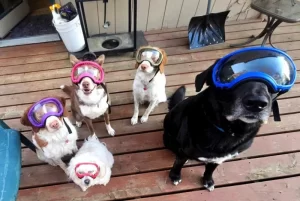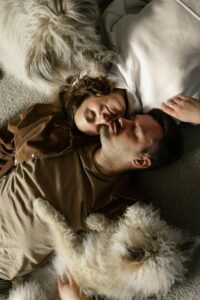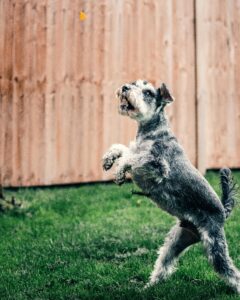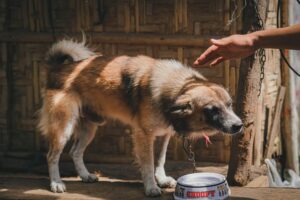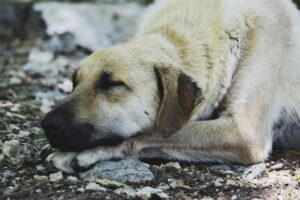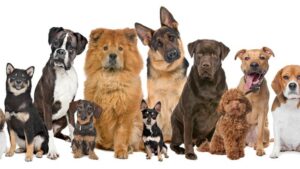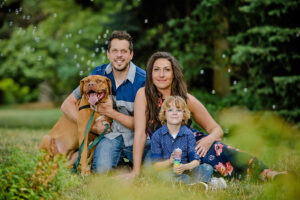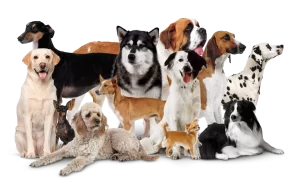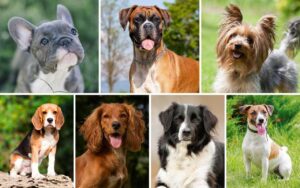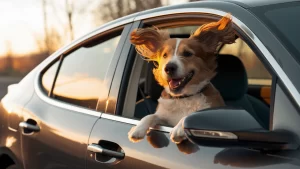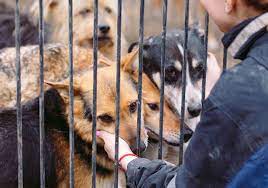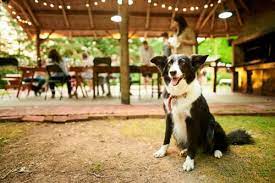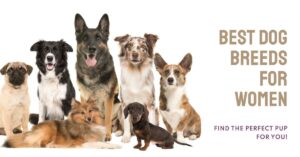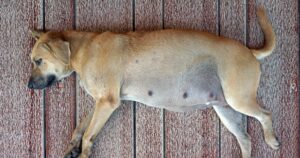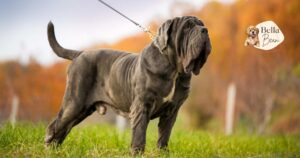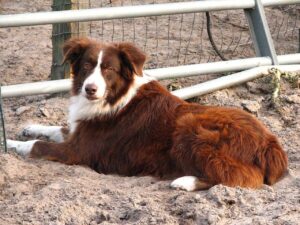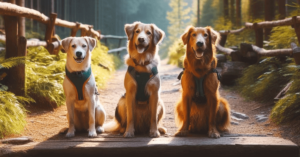Working group dogs are a special type of dog breed that have been selectively bred over time to perform specific tasks. These dogs are known for their intelligence, loyalty, and exceptional work ethics.
They have been used for various purposes such as herding, guarding, hunting, and even search and rescue operations. In this blog post, we’ll take a closer look at the history of working group dogs, their classification, roles and responsibilities, notable breeds, and how to choose the right breed for your needs.
Table of Contents
ToggleHistory of Working Group Dogs
Working group dogs have been around for centuries and have been selectively bred for their specific work roles. The ancient Egyptians were one of the first cultures to domesticate dogs for hunting purposes.
Later, the Romans used dogs for a variety of purposes, including guarding, herding, and hunting. In the Middle Ages, dogs were also used for guarding and herding, and they were even used as war dogs.
The modern breeds of working group dogs that we know today were developed during the 19th and 20th centuries. The Industrial Revolution brought about many changes in society, including the need for new types of working dogs.
The advent of railroads and other forms of transportation made it necessary to have dogs that could guard and protect goods and people during transit. Similarly, the rise of agriculture and farming led to the development of dogs that could herd and protect livestock.
Classification of Working Group Breeds
Working group dogs are classified based on their purpose and characteristics. The American Kennel Club (AKC) recognizes several breeds in the working group, including:
- Alaskan Malamute
- Bernese Mountain Dog
- Boxer
- Bullmastiff
- Doberman Pinscher
- Giant Schnauzer
- Great Dane
- Great Pyrenees
- Greater Swiss Mountain Dog
- Mastiff
- Newfoundland
- Portuguese Water Dog
- Rottweiler
- Saint Bernard
- Siberian Husky
- Standard Schnauzer
These breeds vary in size, temperament, and physical characteristics, but they all share a common trait of being highly trainable and suited for work.
Roles and Responsibilities of Working Group Dogs
Working group dogs have a wide range of roles and responsibilities, depending on the breed and the specific needs of their owners. Some of the most common roles of working group dogs include:
Guarding: Working group dogs are known for their protective instincts and make excellent guard dogs. They are often used to protect homes, businesses, and other properties.
Herding: Many working group dogs have been bred for herding livestock, such as sheep and cattle. They use their intelligence and natural instincts to guide and control the animals.
Search and Rescue: Some working group dogs are trained for search and rescue operations, such as finding lost or missing people.
Police and Military: Certain breeds of working group dogs, such as the German Shepherd, are used in police and military operations to detect explosives, drugs, and other contraband.
Therapy Dogs: Working group dogs can also be trained as therapy dogs to provide emotional support to people in hospitals, nursing homes, and other settings.
Notable Working Group Breeds
While all working group dogs are exceptional in their own way, some breeds stand out due to their unique characteristics and contributions. Let’s take a closer look at some of the most notable working group breeds:
Alaskan Malamute: This breed is known for its strength and endurance, and is often used in sled racing and other types of winter activities. They are also excellent family pets, with a friendly and affectionate disposition.
Boxer: Boxers are known for their playful and energetic nature, as well as their loyalty and protective instincts. They are often used as guard dogs and make great companions for families.
Doberman Pinscher: This breed is known for its intelligence, agility, and loyalty. They are often used as police dogs and can be trained for a variety of tasks, including tracking, search and rescue, and personal protection.
Great Dane: Great Danes are one of the largest dog breeds and are known for their gentle and affectionate nature. They are often used as therapy dogs and make great family pets.
Newfoundland: This breed is known for its strength and swimming abilities, and is often used in water rescue operations. They are also gentle and loving companions for families.
Rottweiler: Rottweilers are known for their strength, intelligence, and loyalty. They are often used as police and military dogs and can be trained for a variety of tasks, including search and rescue and personal protection.
Saint Bernard: This breed is known for its massive size and strength, as well as its gentle and affectionate nature. They are often used in search and rescue operations, particularly in mountainous regions.
Siberian Husky: Siberian Huskies are known for their strength, endurance, and ability to withstand cold temperatures. They are often used in sled racing and other winter sports.
Bernese Mountain Dog: This breed is known for its strength, loyalty, and gentle nature. They are often used as therapy dogs and make great family pets.
Mastiff: Mastiffs are one of the largest dog breeds and are known for their strength and protective instincts. They are often used as guard dogs and can be trained for personal protection.
These breeds have made significant contributions to society and have proven their worth as working dogs.
Choosing a Working Group Breed
When it comes to choosing a working group breed, it’s important to consider your specific needs and lifestyle. Different breeds have different temperaments, exercise requirements, and grooming needs. Here are some factors to consider when choosing a working group breed:
Purpose: What do you need the dog for? Do you need a guard dog, a herding dog, or a therapy dog?
Temperament: Working group dogs can vary widely in temperament, from friendly and affectionate to aloof and protective. Consider what type of temperament would work best for you and your family.
Exercise Requirements: Many working group dogs have high exercise requirements and need plenty of physical activity each day. Consider your own lifestyle and whether you have the time and energy to meet these needs.
Grooming Needs: Some working group breeds have high grooming needs and require regular brushing and grooming. Consider whether you have the time and resources to keep up with these needs.
Size: Working group dogs can vary widely in size, from small and compact to large and massive. Consider how much space you have in your home and whether you can accommodate a larger breed.
Conclusion
Working group dogs are an important part of our society, with a long history of serving as loyal and dedicated companions to humans. These dogs have been selectively bred for their specific work roles and have proven their worth in a variety of settings.
Whether you need a guard dog, a herding dog, or a therapy dog, there is a working group breed that can meet your needs. By considering your specific lifestyle and requirements, you can choose the right breed and enjoy the many benefits of having a working group dog in your life.



